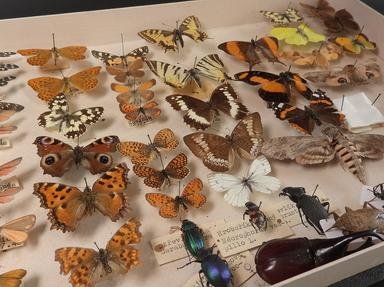Quiz Answer Key and Fun Facts
1. Scientific name: Anax imperador; males have blue abdomens; frequent British gardens in summer
2. Scientific name: Scarabaeus sacer; eats dung; plays an important role in seed distribution
3. Scientific name: Coccinella septempunctata; eats aphids; nursery rhyme about house on fire
4. Scientific name: Anthonomus grandis; subject of blues song; eats cotton buds and flowers
5. Scientific name: Apis mellifera; queens, workers and drones; important in production of honey and pollination
6. Scientific name: Cryptotympana atrata; used in Chinese cooking; distinctive courtship noise made by males
7. Scientific name: Mantis religiosa; called 'santateresa' in Spanish; females eat the males
8. Scientific name: Blatella germanica; emit nasty smell when frightened; scavengers
9. Scientific name: Mastotermes darwiniensis; exclusive to northern Australia; eats organic material
10. Scientific name: Dermatobia hominis: an internal parasite; uses mosquitoes to transfer its eggs
Source: Author
Kankurette
This quiz was reviewed by FunTrivia editor
guitargoddess before going online.
Any errors found in FunTrivia content are routinely corrected through our feedback system.
